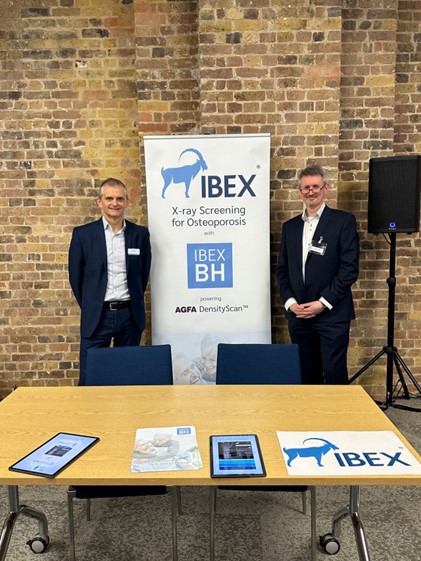A New Approach for Identifying Fracture Risk from a Standard Digital Radiograph
IBEX Trueview® software uses physics modelling and AI methods to return an accurate measurement of bone health from standard DR scans.
The software aims to improve patient outcomes and reduce healthcare costs through increased identification of patients at risk of fracture.

Opportunistic Fracture Risk Prediction
Trueview’s output is correlated to DXA-derived areal bone mineral density (aBMD) and can therefore be combined with other risk factors such as age, gender, and medical history to derive a 10-year risk of fracture.
As this technique can be performed opportunistically, a patient’s inferred fracture risk can be used to support clinical decision-making, for example by more effective triage of patients into the rheumatology care pathway.
NHS and Patient Benefits
Trueview presents the opportunity to increase case finding and improve decision support for osteoporosis treatment across the UK, revealing the potential for major cost savings to the NHS.
Recent health economics modelling indicated £2bn in cost savings and 368,000 quality-adjusted life years across the NHS over 20 years.

Once in widescale use, opportunistic identification of fracture risk is expected to deliver more patients correctly identified at an earlier stage of disease progression, enabling more timely intervention.
This has enormous potential to improve patient outcomes and reduce the ballooning cost of fractures within our growing and ageing population.
Learn More
For a more in-depth insight into Trueview and how it would apply in clinical practice, take a look at the article linked below…





